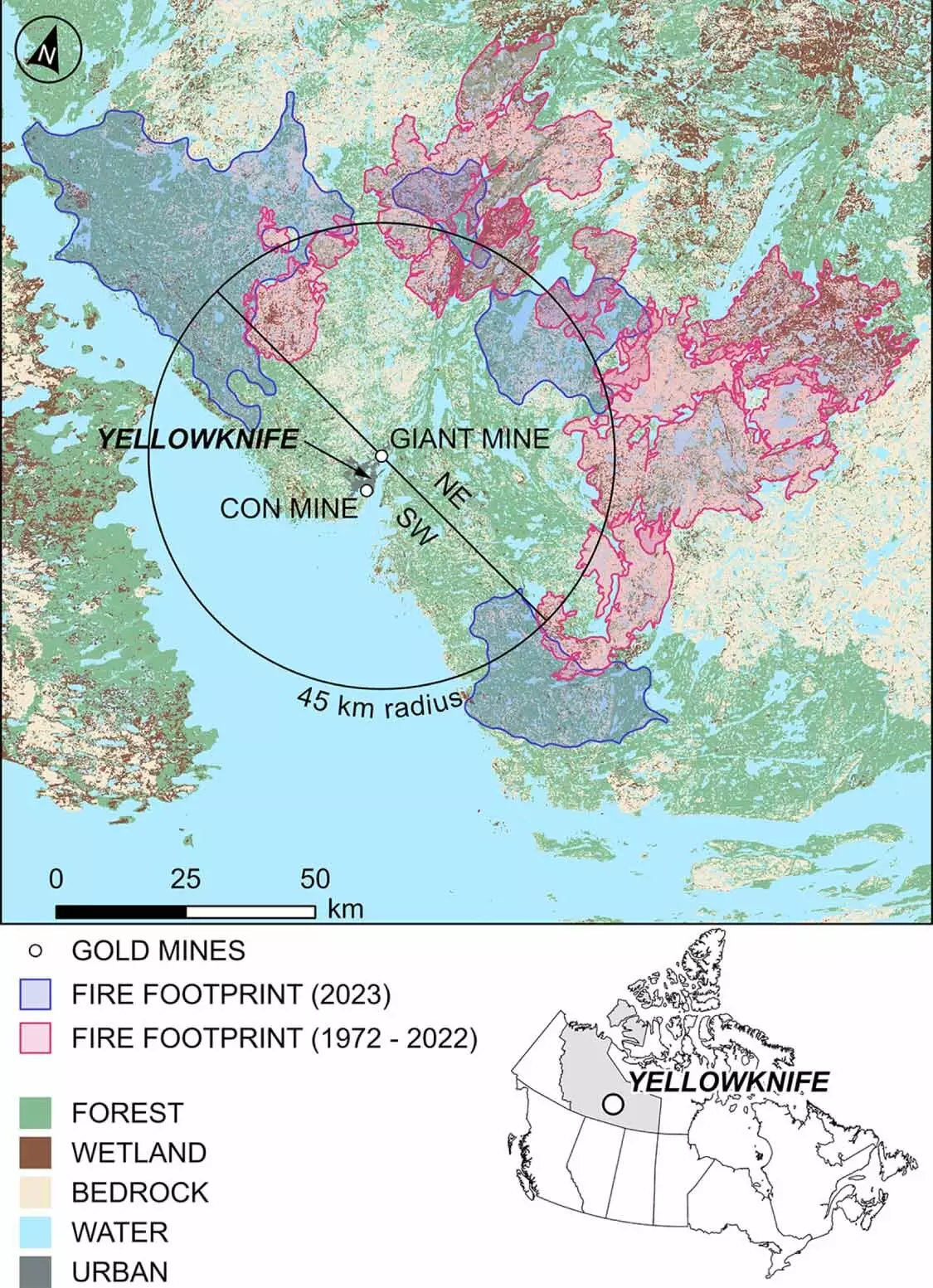The 2023 wildfire season in Canada marked a transformative yet terrifying chapter in the nation’s environmental narrative. As flames ravaged vast landscapes, research emerged indicating that the consequences of these fires reached far beyond mere ecological destruction. The University of Waterloo and Nipissing University produced a pivotal study revealing the disturbing connection between wildfires and arsenic emissions, which has raised critical concerns regarding environmental safety and public health.
Arsenic: The Silent Pollutant
Arsenic is notorious for its toxic properties, linked to severe health complications, including diabetes and cancer. It is particularly insidious when it exists in soil, where it can remain undetected for long periods. In the aftermath of the 2023 wildfires—especially those occurring in and around Yellowknife, Northwest Territories—scientists have estimated that as much as 183 tonnes of arsenic could have been emitted, calculated from data spanning the past fifty years. This staggering figure emphasizes how environmental disturbances can unearth hidden dangers, creating a direct threat to both ecosystems and human populations.
The Role of Mining in Arsenic Accumulation
Yellowknife’s long history of mining is central to understanding the current crisis. As mining operations extract resources, they often leave behind toxic legacies in the form of heavy metals, including arsenic. The study indicates that areas impacted by mining are particularly susceptible to wildfire-induced emissions, suggesting that as climate change increases the frequency and intensity of wildfires, regions with similar industrial histories could face compounded environmental risks.
The Complex Interplay of Variables in Emission Levels
The quantity of arsenic released during wildfires is not a straightforward number. Variables such as fire temperature, burn depth, and soil type intertwine to determine emission levels. This complexity highlights the necessity of developing nuanced approaches to wildfire management and environmental protection. Instead of viewing these fires as isolated events, it is crucial to understand their intricate connections with local geology, industrial activities, and climate patterns.
Urgency for Collaborative Solutions
In light of these findings, experts like Dr. Colin McCarter underscore the pressing need for a collaborative approach that integrates knowledge from various fields. Engaging wildfire scientists, chemists, and environmental policy experts is imperative. By fostering interdisciplinary dialogue, stakeholders can craft comprehensive strategies aimed at mitigating the dual threats of wildfires and toxic emissions. Furthermore, integrating Indigenous fire stewardship practices into modern fire management techniques could offer sustainable solutions that respect traditional ecological knowledge while addressing contemporary environmental challenges.
Wetlands at Risk: A Focus on Contaminant Storage
One of the most alarming revelations from the study involves wetlands, which possess the capability to store significant amounts of arsenic. As they are set ablaze, these waterlogged areas could act as conduits for releasing stored contaminants into the air and nearby water bodies. The research emphasizes an urgent need to further quantify the toxic dynamics of northern peatlands and their potential in emitting other harmful metals. This focus on wetlands encapsulates the complex and often overlooked relationships within ecosystems.
A Call for Systematic Research and Monitoring
With climate change propelling the wildfire crisis to new extremes, the pressing question becomes how societies can adapt. Continuous research and monitoring are essential to understanding the evolving landscape of environmental risk. It is crucial that researchers not only quantify arsenic and other toxins but also explore innovative methods to restore and protect vulnerable ecosystems. By fostering a culture of proactive environmental stewardship, communities can better prepare for the inevitable challenges posed by increasingly severe wildfires.
The research surrounding the devastating 2023 Canadian wildfire season opens a door to a more profound understanding of environmental interdependence. As the realities of climate change become more apparent, the maintenance of delicate ecological balances demands immediate attention and action. The intersection of industrial contamination and wildfires presents a multifaceted challenge that society must meet with foresight and collaborative ingenuity.

